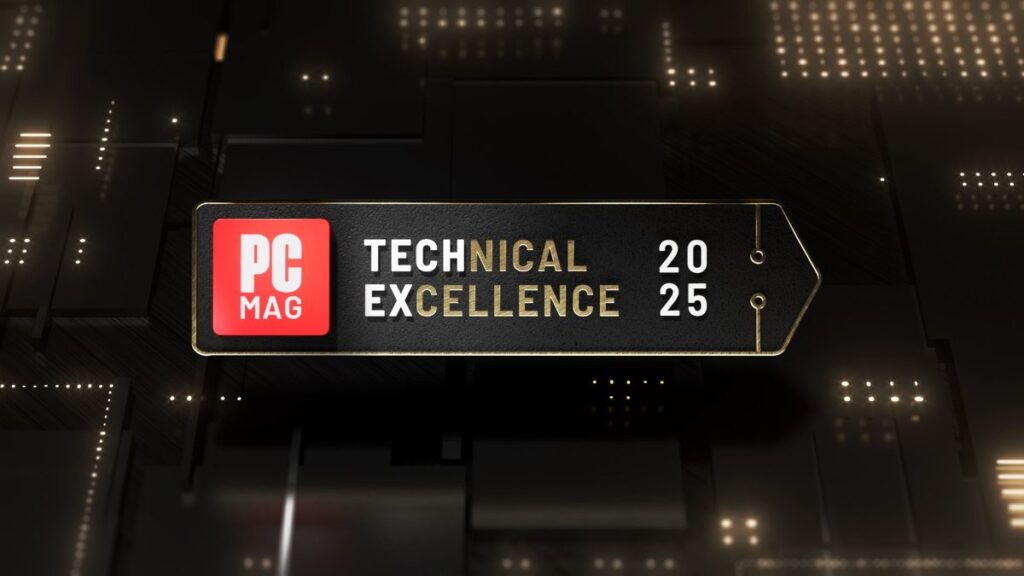
Four decades ago, when the computing industry was in its infancy and artificial intelligence was still largely the realm of science fiction, the editors of PC Magazine embarked on a mission to identify the people and technologies propelling the burgeoning PC industry forward. This mission gave birth to the PCMag Technical Excellence Awards, a prestigious accolade that has since become synonymous with innovation in technology.
First reported in the August 6, 1985 issue, these awards were initially celebrated with grand ceremonies and lavish galas, honoring true pioneers of technology. Among the inaugural winners were the creators of Intel’s 16-bit 286 processor, which powered the first IBM PC. Other early recipients included groundbreaking products like Apple’s first LaserWriter printer and the Telebit 10,000kbps TrailBlazer modem. Known familiarly as “TechEx,” these awards were published annually for over 25 years, chronicling the evolution of technology.
Fast forward forty years, and the technology landscape has transformed dramatically, yet the spirit of innovation remains vibrant. In 2025, PCMag is thrilled to reboot the TechEx Awards, spotlighting the cutting-edge advancements in artificial intelligence, computing, electronics, and more.
The 2025 TechEx Award Winners
This year, 26 winners were meticulously selected by PCMag’s expert editors and writers, each representing a leap in design, engineering, or pure innovation. From advancements in graphics and display technology to breakthroughs in computer-brain interfaces and autonomous vehicles, these winners are pushing the boundaries of what’s possible in the tech industry.
Computing Innovations
Nvidia DLSS 4: Turbocharging Frame Rates with AI
Nvidia’s Deep Learning Super Sampling (DLSS) technology, first introduced in 2019, has once again revolutionized the computer graphics landscape. The latest iteration, DLSS 4, released earlier this year, allows GPUs to render graphics at lower resolutions to enhance performance, then uses machine-learning techniques to sharpen the image quality. This innovation includes multi-frame generation, inserting AI-generated frames between rendered ones to boost frame rates, making it a significant achievement for Nvidia’s GeForce RTX 50-series GPUs.
“With DLSS 4, even gamers with entry-level Nvidia GeForce RTX 5050 can enjoy smooth frame rates and ray tracing across more than 100 modern titles.” — Matthew Buzzi
AMD Ryzen AI Max+ 395 (Strix Halo): A Shape-Shifting x86 Powerhouse
AMD’s Ryzen AI Max+ 395, known as “Strix Halo,” is a versatile System on Chip (SoC) that excels in a range of devices from compact desktops to mobile workstations. This chip accesses a sliding amount of system memory as graphics memory, up to 96GB, bringing Apple’s unified memory concept to x86 and Linux platforms. The Max+ 395 is based on AMD’s “Zen 5” architecture, featuring 16 CPU cores and 40 GPU cores, making it a trailblazer for AI-powered computing.
AI and Connectivity
Nvidia DGX Spark GB10: An AI Lab in a Box
The DGX Spark is a compact PC powered by Nvidia’s “Grace Blackwell” GB10 Superchip, integrating data-center architecture into a single-system solution that fits on a desk. This innovation marks a significant reduction in size and power consumption for AI infrastructure, enabling developers to run a 200-billion-parameter model on a single GB10 box. The system can also connect to additional DGX Sparks for larger models and distributed applications.
CUDIMM Memory Technology: Feeding the Bandwidth Beast
The introduction of CUDIMMs (Clocked Unbuffered Dual In-line Memory Modules) addresses the ever-growing bandwidth needs of high-performance components. With a clock driver that maintains stability at higher frequencies, CUDIMMs extend the speed range of DDR5 memory, pushing beyond 9,000MT per second. Currently supported by Intel’s “Arrow Lake” platform, this technology is poised for widespread adoption as demand for bandwidth continues to rise.
Consumer Electronics and Mixed Reality
Hisense 116UX RGB-LED Backlight System: Setting a New Brightness Bar
Hisense’s 116UX RGB-LED backlighting technology represents a major advancement in television display quality. By using clusters of colored LEDs to illuminate an LCD panel, the 116UX enhances color display beyond traditional methods. This technology, while expensive, offers a glimpse into the future of television displays, potentially rivaling OLED panels.
Samsung Galaxy XR & Android XR Mixed Reality Platform: One Step Closer to Mixed Reality for All
The Samsung Galaxy XR, based on the Android XR platform, is a significant leap forward in mixed reality. This immersive headset allows users to interact with digital experiences in their physical surroundings, controlled by eye and hand movements. Unlike Apple’s closed ecosystem, the Galaxy XR offers a more open platform, making mixed reality more accessible at a lower price point.
AI and Voice Technology
Open AI ChatGPT Deep Research: AI-Driven Research with Robust Sourcing
Launched in February, ChatGPT’s Deep Research feature leverages AI to generate comprehensive reports with detailed sourcing on any topic. This tool stands out for its depth and accuracy, providing a reliable research assistant in an era where misinformation is prevalent. Google Gemini first introduced a similar feature, but ChatGPT’s implementation offers more robust sourcing and smarter follow-up questions.
“This is the company’s first widely used agent capable of reasoning for extended periods to synthesize information and produce research and analysis.” — Isa Fulford, OpenAI
Google Gemini Nano Banana: Fast, Free, Incredibly Capable Image Editing
Google’s Nano Banana, an AI image editing tool, offers quick and precise edits based on user prompts. Unlike other AI tools that struggle with distortions, Nano Banana excels in ease of use and versatility, democratizing image editing for the average user.
Transportation and Connectivity
T-Mobile T-Satellite: No Signal? No Problem
T-Mobile’s T-Satellite service, in collaboration with SpaceX, aims to eliminate cellular dead zones across the US. Utilizing a constellation of Starlink satellites, this service transforms the sky into a network, allowing users to stay connected in previously unreachable areas. The service is set to improve further with the acquisition of valuable radio spectrum.
Waymo Autonomous Vehicles: Smarter Self-Driving Cars Paving the Way
Waymo continues to lead the charge in autonomous vehicle technology, expanding its services to more US cities and partnering with Uber to manage its fleet. The Waymo Driver software, utilizing cameras, radar, and LiDAR, provides a comprehensive view of the road, setting the standard for self-driving technology.
As the 2025 PCMag Technical Excellence Awards celebrate these groundbreaking innovations, they highlight the relentless pursuit of progress in the tech industry. From AI advancements to new frontiers in connectivity and transportation, these winners exemplify the power of innovation to transform our world.







